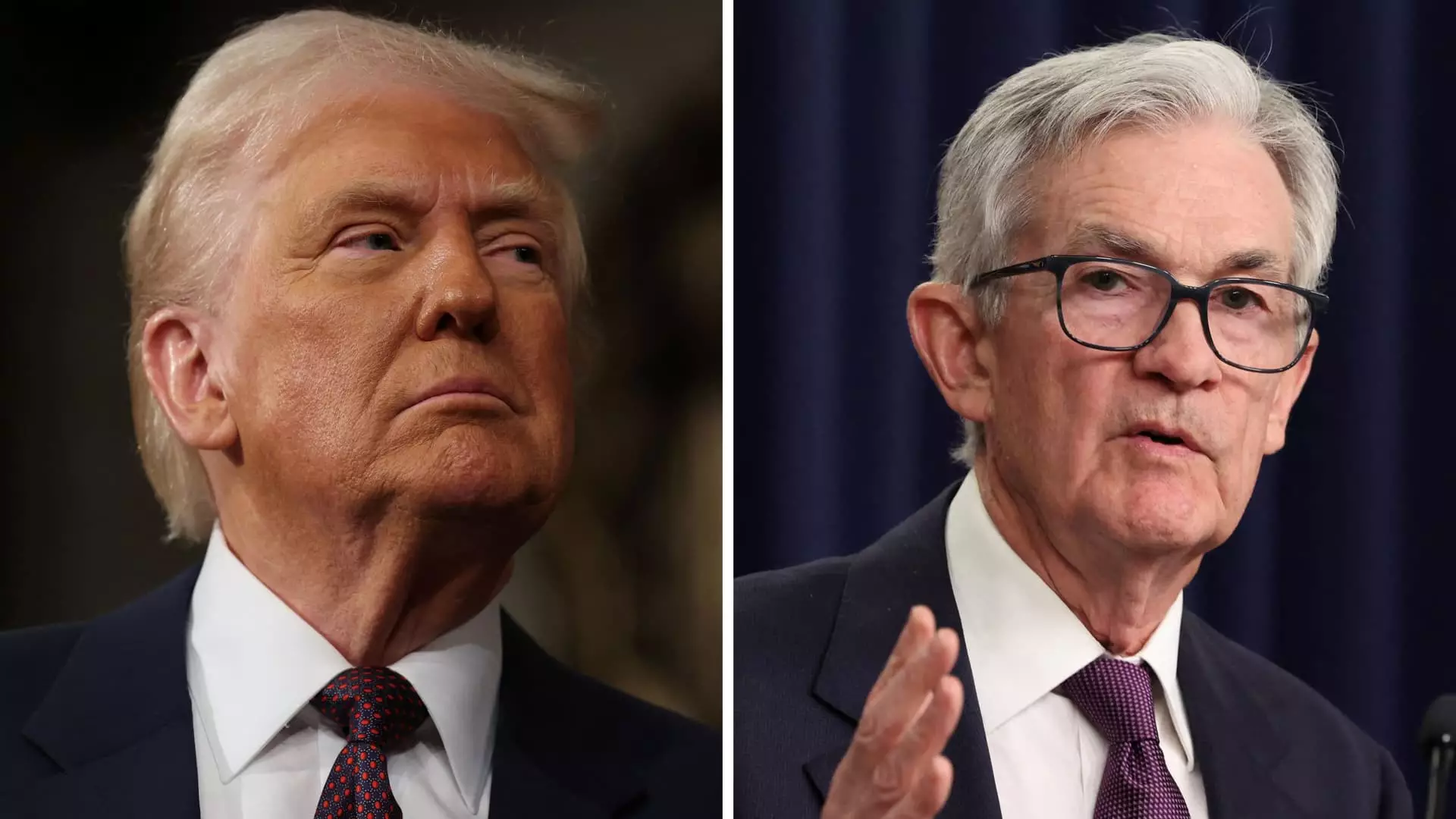In the high-stakes arena of financial markets, political maneuvers often send ripples that can reshape investment landscapes within moments. Recently, concerns surged when reports indicated that President Donald Trump contemplated firing Federal Reserve Chair Jerome Powell. While Trump publicly denied such intentions, the very suggestion of a leadership shakeup at the Federal Reserve exposed underlying tensions between the executive branch and the nation’s central banking authority. This scenario underscores a critical reality: markets are exquisitely sensitive to political signals, especially when they threaten the stability and independence of monetary policy.
The news initially caused stocks to tumble, reflecting investor unease—a typical reaction when the unthinkable of central bank interference is broached. Yet, the resilience of the markets was notable; fears were quickly tempered by presidential denial, and indices rebounded to close on a hopeful note. Such episodes reveal that beyond immediate reactions, markets endure and often ignore these political skirmishes in favor of broader economic fundamentals. However, it’s essential for investors to recognize that these power struggles can generate volatility and demand a cautious approach, especially in times of political uncertainty.
The underlying narrative here is the constant battle between economic pragmatism and political influence. When leadership signals instability at the Fed—an institution tasked with balancing inflation, employment, and growth—it erodes confidence and complicates the policy landscape. For investors, this club of tension serves as an ominous warning: the independence of monetary policy remains a delicate asset, susceptible to erosion by political appetites, which can have long-lasting repercussions on asset prices and economic stability.
Regulatory Battles and the Future of Cryptocurrency
Amidst the political drama, another complex front is unfolding—cryptocurrency regulation. The House of Representatives recently navigated a marathon voting session, ultimately advancing bills that aim to impose rules on the burgeoning digital asset industry. This legislative effort reflects the ongoing debate over how to balance innovation with consumer protection and systemic safeguards. The fact that the vote stretched into modern House history underlines the polarity and difficulty in achieving consensus on crypto regulation.
For investors, this legislative process encapsulates both opportunity and risk. Clearer regulation can foster legitimacy, potentially attracting institutional capital. Conversely, overly restrictive policies could stifle innovation and limit growth prospects. The tense legislative debate exemplifies the broader challenge: how governments can craft policies that support technological advancement while safeguarding financial stability. The outcome of these bills may influence the trajectory of digital assets and shape future market dynamics profoundly.
The legislative struggle also signals a deeper question: how prepared is the existing political infrastructure to govern rapidly evolving technologies? The prolonged debate not only reflects legislative indecision but also highlights the risk of regulatory uncertainty—a factor that can deter investment and dampen market enthusiasm in crypto markets.
Corporate Earnings: A Mixed but Resilient Signal
In the corporate world, earnings reports paint a nuanced picture. PepsiCo’s second-quarter results exceeded analyst expectations, bolstering confidence in the consumer staples sector. Despite softer demand globally, domestic sales remain on a positive trend, indicating resilience amid a shifting consumer landscape. This performance demonstrates the importance of diversified global operations, which buffer companies from localized economic shocks.
On the other hand, United Airlines reveals the travel industry’s fragility. The airline’s revised forecasts, influenced by operational hiccups and external disruptions, underscore the vulnerabilities of sectors reliant on precise logistics. While the company beat EPS estimates—an achievement amidst challenges—the revenue miss hints at broader demand uncertainties. Notably, demand for premium international travel remains strong, providing a silver lining for the airline industry’s outlook.
For investors, these mixed earnings underline the importance of sector-specific analysis. Consumer staples, benefiting from steady demand, serve as a safe haven, while travel and hospitality sectors require more nuanced risk assessments. Furthermore, operational hiccups like Newark’s air traffic control issues showcase how regulatory and logistical challenges can swiftly impact earnings, emphasizing the necessity of vigilant monitoring.
Corporate Governance and Emerging Stakeholder Challenges
Tesla’s ongoing governance disputes bring fresh perspective to corporate accountability. In New York, state officials are scrutinizing Tesla’s move to amend bylaws requiring shareholders to hold 3% of stock to file derivative lawsuits—an obstacle for smaller investors challenging company management. The New York State Common Retirement Fund’s objections illuminate the rising influence of institutional investors advocating for transparency and accountability.
Tesla’s situation also highlights the tension between corporate agility and stakeholder rights. Shareholder rights are the bedrock of a functioning democracy within a corporation; limiting access to legal remedies effectively concentrates power away from smaller investors. As Tesla’s case unfolds, it may set preemptive precedents about corporate governance, especially concerning shareholder activism and the regulation of large tech companies.
In a broader sense, this controversy highlights the evolving landscape of stakeholder engagement—one where institutional investors are increasingly vocal about governance reforms. For markets, this signifies a shift toward more responsible corporate behavior, necessitating companies to balance innovation with accountability to sustain investor confidence and long-term growth.
In the end, today’s market landscape is defined by a complex web of political power plays, regulatory uncertainties, resilient corporate earnings, and shifting stakeholder dynamics. For investors, understanding these interconnected factors is essential—not just for navigating immediate volatility but for positioning oneself strategically in an environment where influence, accountability, and resilience are more intertwined than ever.


Leave a Reply